Best Practices: Painting and Flooring at a Fire Station
Right when we walked into the Brownstown Fire Station, their bay told a story. Diesel haze still clinging to the ceiling, salt scars from Michigan winters and squeegee tracks that never quite dried straight.
The goal wasn’t “new paint.”
It was smoother turnarounds for their trucks, safer footing, and a brighter workday for our first responders.
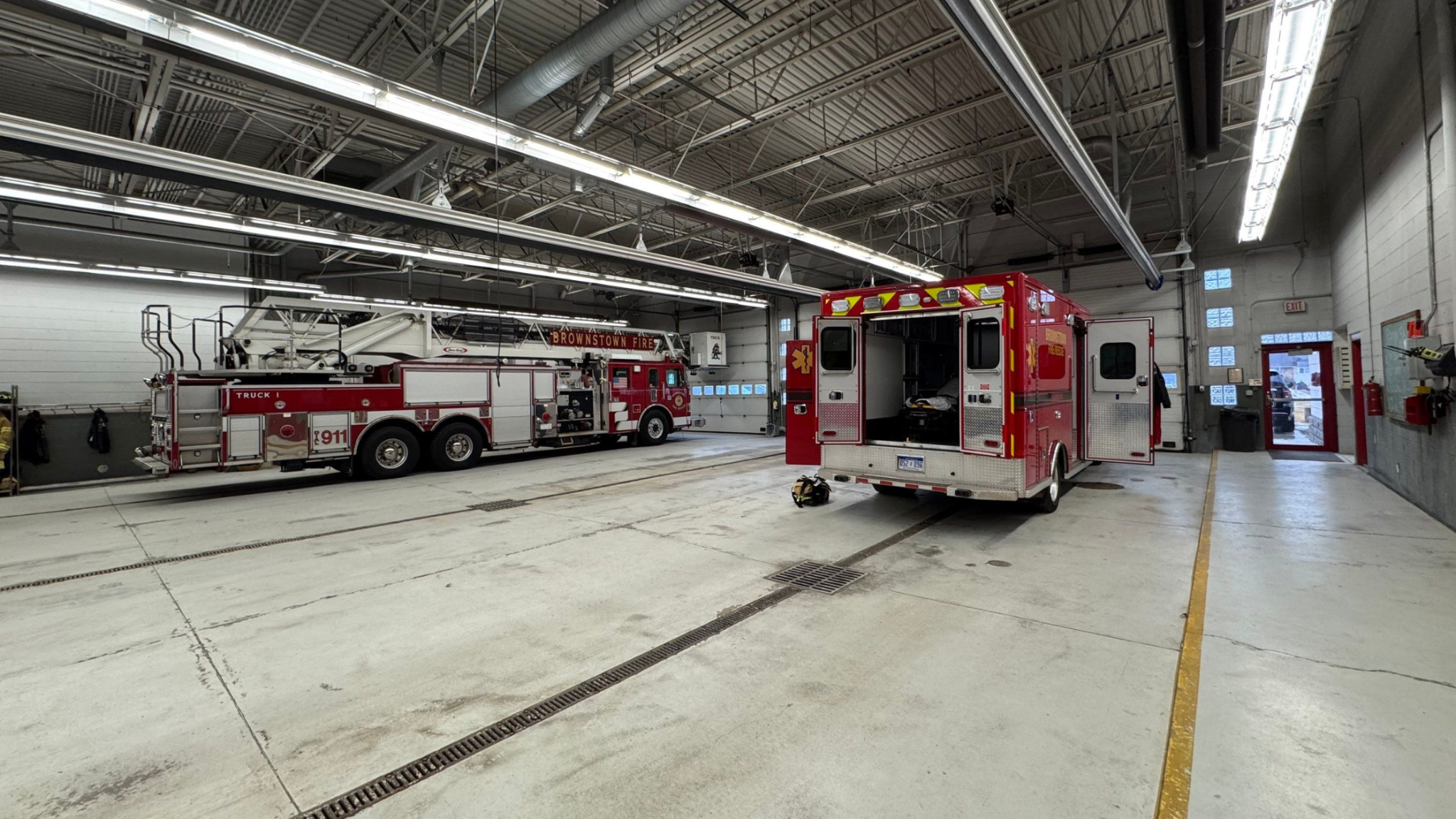
Operations Come First
Increasing light, directing traffic, and handling wash-downs are system requirements and first priority.
We chose paint that reduces complications: visual, chemical, and maintenance.
We gave edges extra attention (drains, joints, door frames) because failures start at transitions.
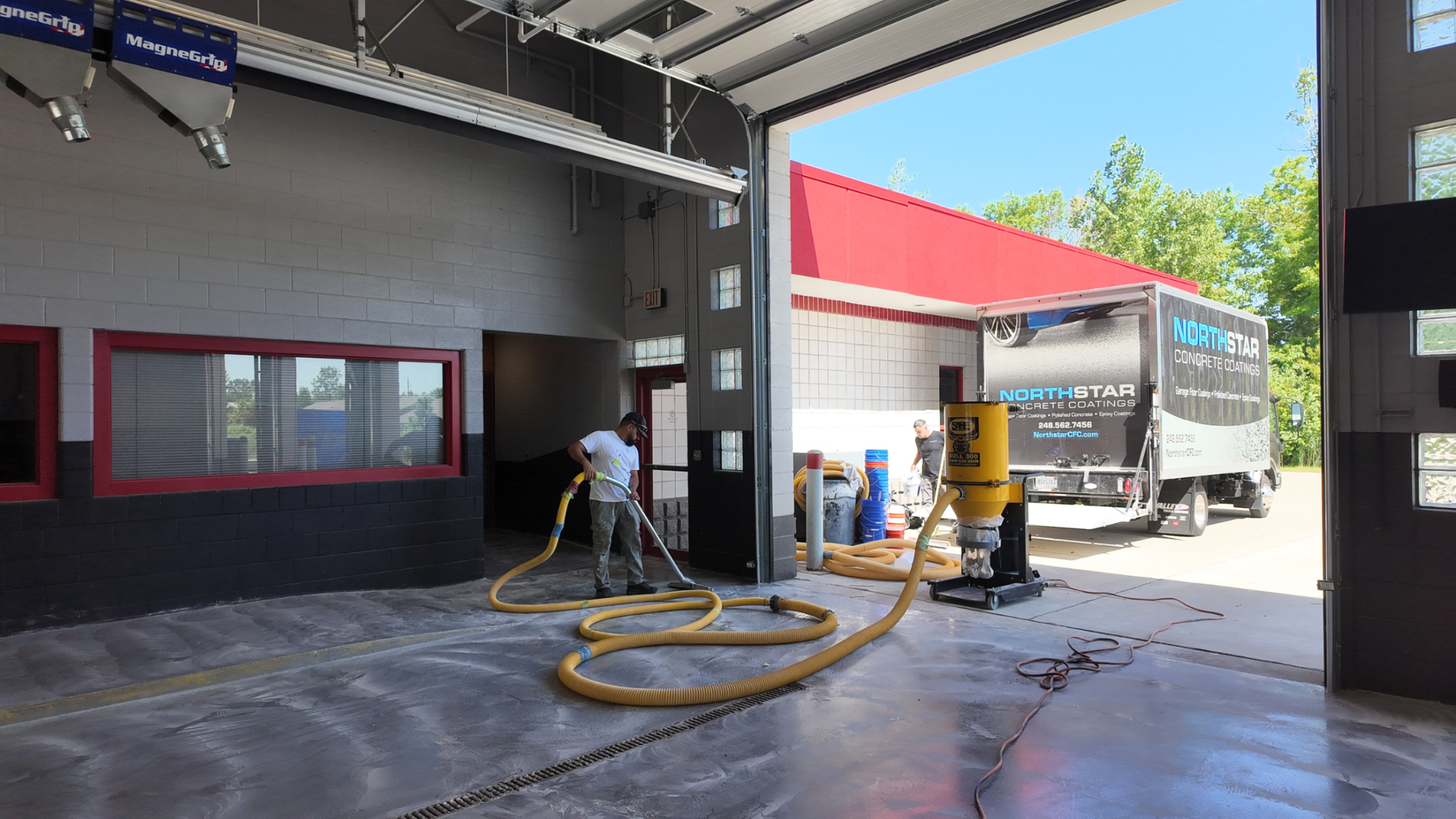
What We Delivered
Making Light Do More Work
Ceiling and upper wall surfaces got a white industrial paint to bounce light back into the bays.
Dryfall paint turns from spray to dust on the way down, so cleanup stays minimal and everything stays clean.
Walls Built for Scuffs and Spray
CMU received block filler first to seal pores and stop chalking, so hose-downs are faster and detergents don’t disappear into the wall.
We ran a two-tone scheme: black paint for the “impact zone,” then gray above for clarity and light balance.
Metals That Won’t Flash-Rust or Chalk
All rusty or repaired areas were isolated with a rust-inhibitive primer.
Hollow metal doors/frames and windows were finished in custom red acrylic and a water-based alkyd urethane where needed for harder, cleaner edges and better block resistance.
Floors Engineered for Daily Abuse
We mechanically ground the floor, corrected a ½" joint lip in Bay 1, and cleaned to white-glove standard before coatings.
We found every crack and added new polyurea joints to keep squeegees from catching, reduce dirt traps, and minimize telegraphing.
Primer down, then two epoxy base coats (Steel Gray and Charcoal) plus red striping for choreography.
A clear polyurethane topcoat locks in chemical resistance and reduces hot-tire pickup; plan 24 hours before heavy traffic.
Safety that’s visible at a glance
Red edge lines at curb drops create instant depth cues for boots and wheels.
Door windows and trims are finished to read cleanly against the wall tone so sightlines stay crisp.
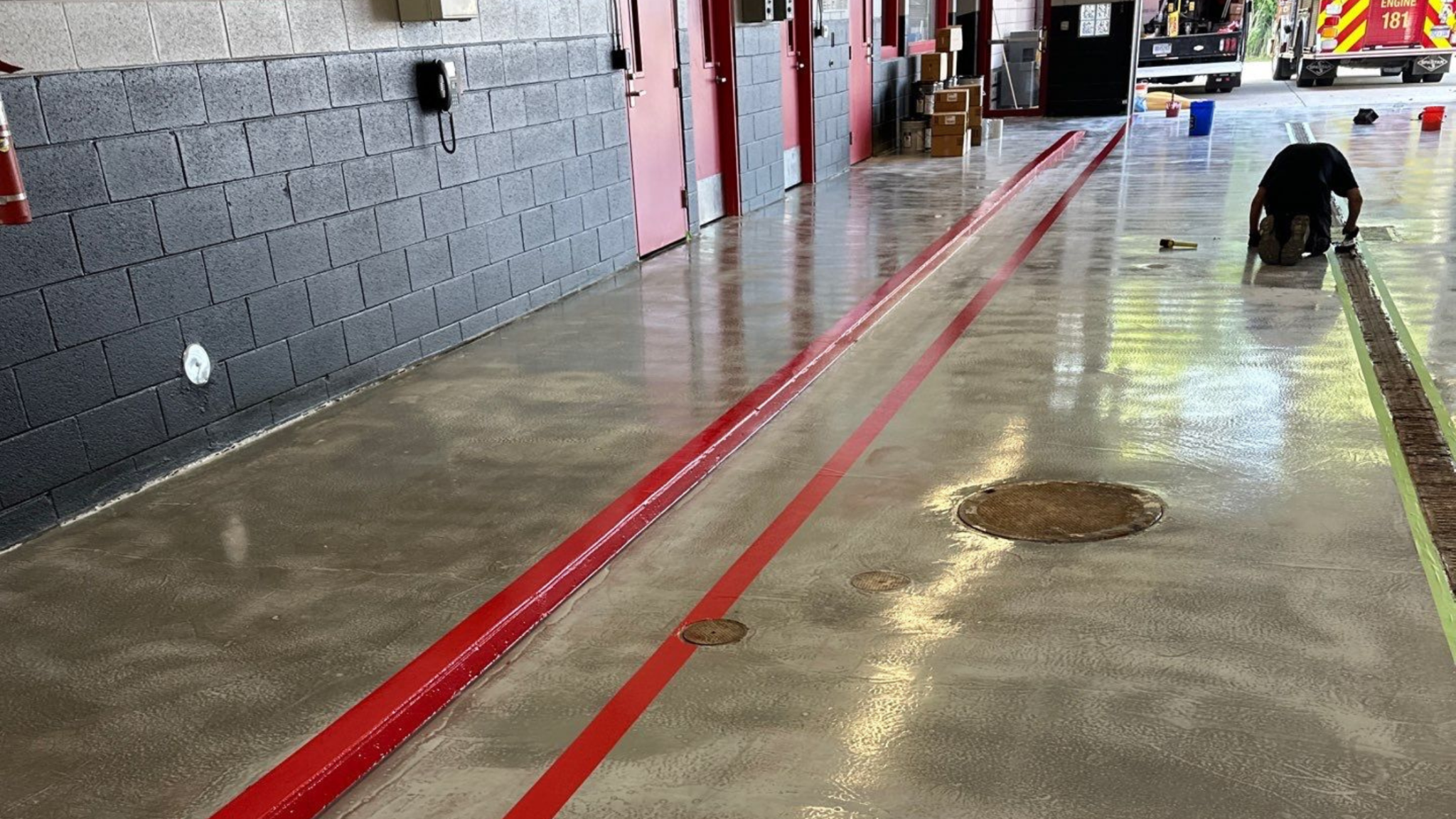
Hidden gems we wish every station knew
1. Light is a budget item.
A highly reflectant ceiling can add light without buying new fixtures.
That one-block down extension isn’t just pretty, it eliminates the shadow seam that makes bays feel dim.
2. Block filler pays back in labor hours.
Unfilled CMU drinks soap and gives you streaks; filler creates a smooth, non-dusting surface that rinses clean.
3. Specify the scuff zone, not just the color.
A 6' dark datum (we used Tricorn Black) hides bumper rubs and hose scrapes and gives crews a visual baseline for staging.
4. Joints decide longevity.
Grinding lips flush and using fast-gel polyurea joint fill prevents chipping at wheel paths and stops squeegee chatter that leaves standing water.
5. Drain detailing matters more than you think.
Prepping and coating grates with the system keeps the look consistent and stops rust stains from “bleeding” into your brand-new floor.
6. Cure windows beat rework.
Respect the 8-hour recoat and 24-hour heavy-traffic wait-time; it’s the difference between a decade of service and year-two touchups.
7. Choose a topcoat for chemicals you actually use.
Polyurethane handles diesel residue, DEF, and common station cleaners better than straight epoxy; less ambering, fewer scuffs.
8. Color blocks are choreography.
Steel Gray, Charcoal, and Red aren’t just aesthetics; they map apparatus lanes, walking edges, and hazard cues so training sticks visually.
9. Clean smarter, not harsher.
Avoid high-pH butyl or citrus solvents early in the life of a floor; use neutral to mildly alkaline cleaners and microfiber for walls to protect sheen.
10. Future-proof with access points.
Keep color breaks and striping away from trench drains and door thresholds to simplify repairs and keep lines looking laser-straight after service.
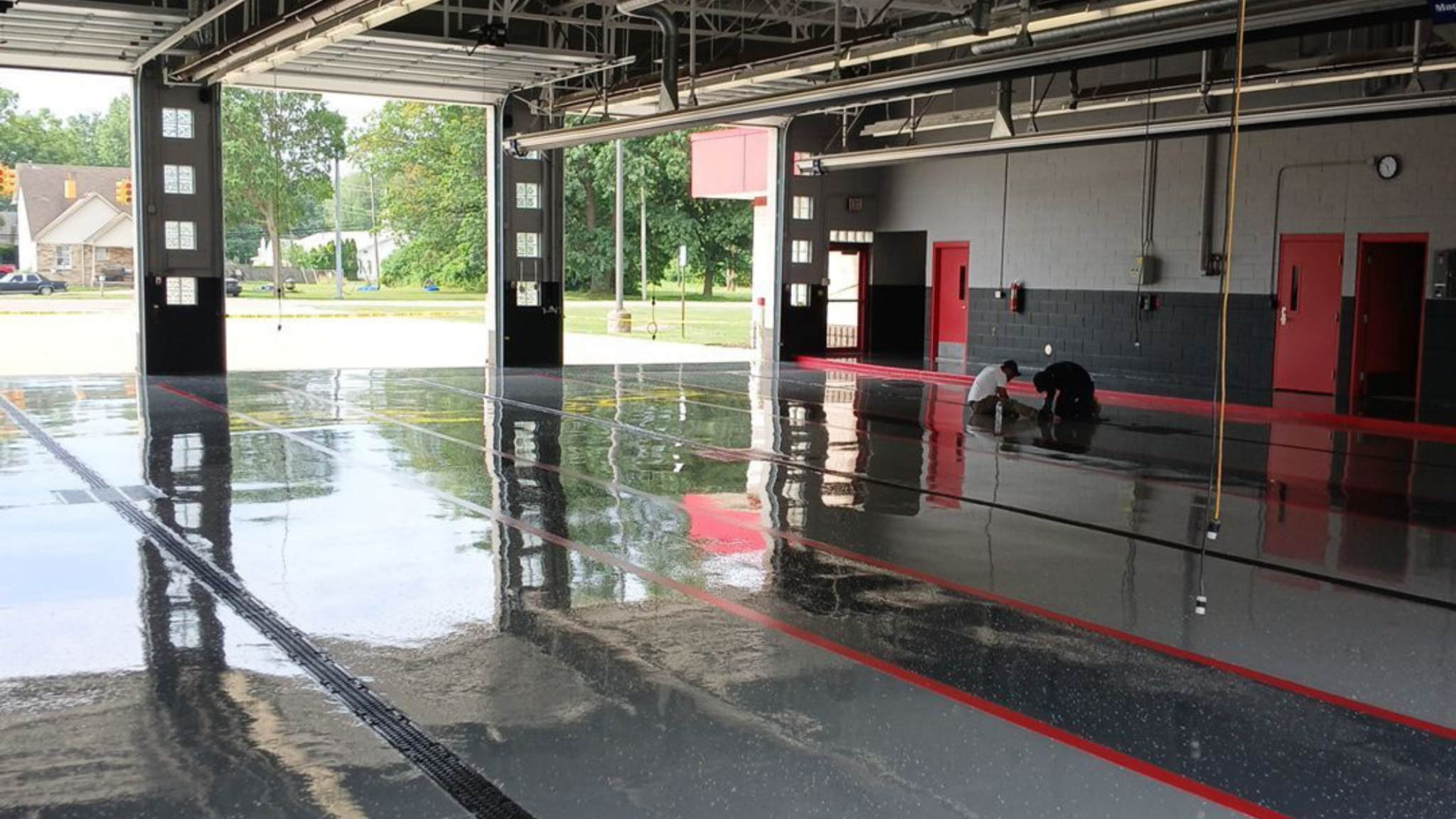
Maintenance Cheat Sheet
Walls: Rinse from the top down; use soft bristle + neutral cleaner; spot-touch eggshell without flashing.
Floors: Daily dust mop; weekly auto-scrub with soft pads; no steel wool; keep snow-melt salts rinsed off.
Metals: Inspect bottom edges quarterly; if chips expose metal, spot prime with ProCryl before top-coating.
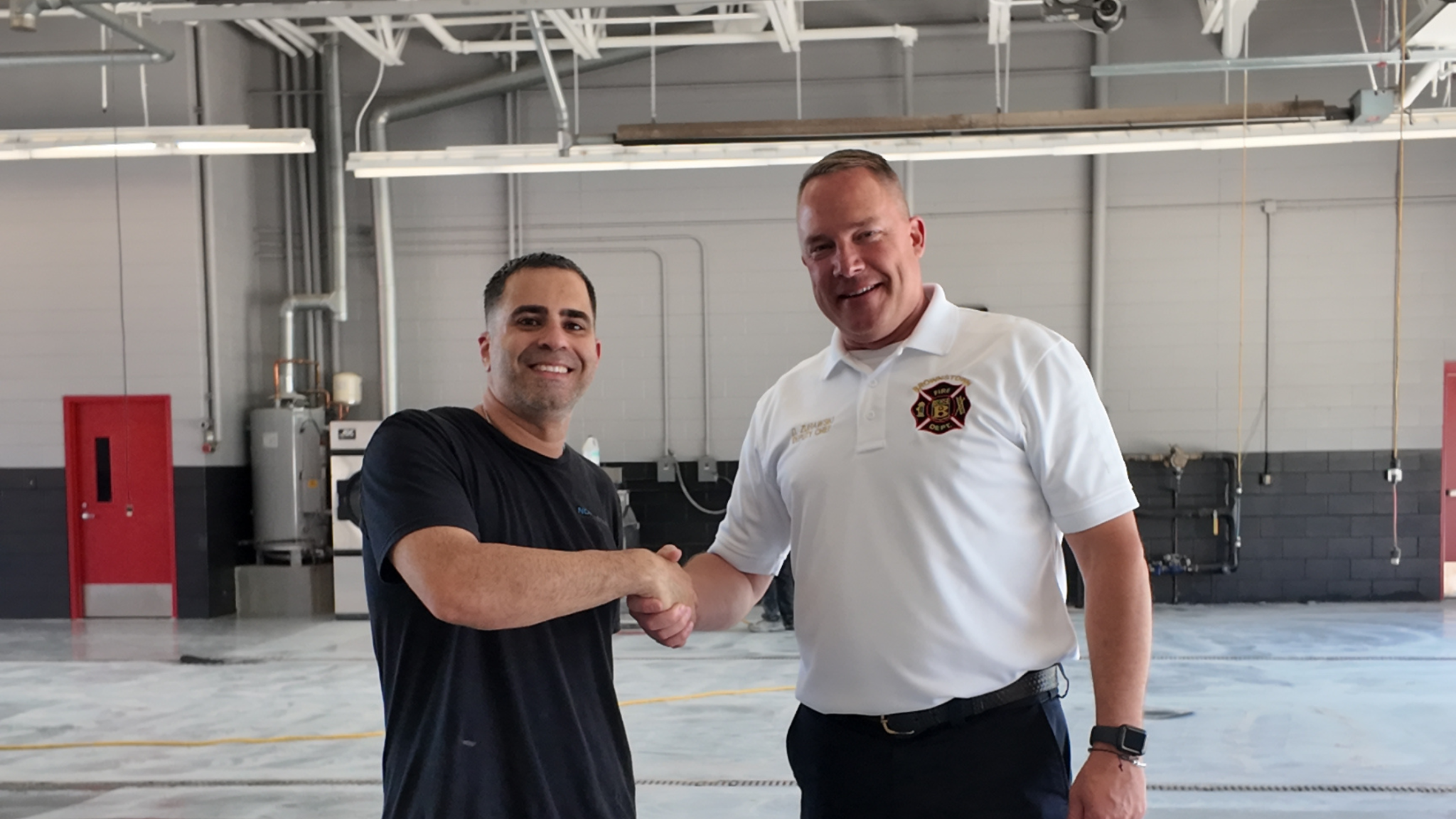
Next Steps
Walk-through to confirm light goals and lane choreography for your bays.
Moisture and profile checks on the slab if flooring is in scope.
Color board with your exact reds, grays, and black datum at 6'.
One-bay pilot striping plan to validate the dimensions and foot traffic.
Lock a phased schedule that fits your apparatus rotation and cleaning windows.
Get your custom care plan with cleaners, pad types, and touch-up SKUs.
If you’re managing a station and want finishes that work as hard as your crew, Northstar Painting will spec, sequence, and deliver it; edge to edge.

